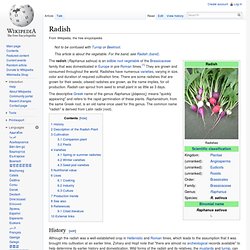

Plant. Green plants obtain most of their energy from sunlight via photosynthesis by primary chloroplasts that are derived from endosymbiosis with cyanobacteria.

Their chloroplasts contain chlorophylls a and b, which gives them their green color. Some plants are parasitic or mycotrophic and have lost the ability to produce normal amounts of chlorophyll or to photosynthesize. Plants are characterized by sexual reproduction and alternation of generations, although asexual reproduction is also common.
Fagopyrum. Brassicaceae. The name Brassicaceae is derived from the included genus Brassica.

Cruciferae, an older name, meaning "cross-bearing", describes the four petals of mustard flowers, which are reminiscent of a cross; it is one of eight plant family names without the suffix -aceae that are authorized alternative names (according to ICBN Art. 18.5 and 18.6 (Vienna Code)), and thus both Cruciferae and Brassicaceae are used. The family contains over 330 genera and about 3,700 species, according to the Royal Botanic Gardens, Kew.
Radish. The descriptive Greek name of the genus Raphanus (ῥάφανος) means "quickly appearing" and refers to the rapid germination of these plants.

Raphanistrum, from the same Greek root, is an old name once used for this genus. The common name "radish" is derived from Latin radix (root). History[edit] Although the radish was a well-established crop in Hellenistic and Roman times, which leads to the assumption that it was brought into cultivation at an earlier time, Zohary and Hopf note that "there are almost no archeological records available" to help determine its earlier history and domestication.
Wild forms of the radish and its relatives, the mustards and turnip, can be found over western Asia and Europe, suggesting that their domestication took place somewhere in that area. Tree. A tree typically has many secondary branches supported clear of the ground by the trunk.

This trunk typically contains woody tissue for strength, and vascular tissue to carry materials from one part of the tree to another. For most trees it is surrounded by a layer of bark which serves as a protective barrier. Pinophyta. Although the total number of species is relatively small, conifers are of immense ecological importance.

They are the dominant plants over huge areas of land,[4] most notably the boreal forests of the northern hemisphere,[1] but also in similar cool climates in mountains further south. Boreal conifers have many wintertime adaptations. The narrow conical shape of northern conifers, and their downward-drooping limbs, help them shed snow. Many of them seasonally alter their biochemistry to make them more resistant to freezing, called "hardening". While tropical rainforests have more biodiversity and turnover, the immense conifer forests of the world represent the largest terrestrial carbon sink, i.e. where carbon from atmospheric CO2 is bound as organic compounds.
They are also of great economic value, primarily for timber and paper production;[1][4] the wood of conifers is known as softwood. Evolution[edit] Pine. Etymology[edit] The modern English name pine derives from Latin pinus which some have traced to the Indo-European base *pīt- ‘resin’ (source of English pituitary.[2] In the past (pre-19th century) they were often known as fir, from Old Norse fyrre, by way of Middle English firre.

The Old Norse name is still used for pines in some modern north European languages, in Danish fyr, in Norwegian fura/fure/furu, Swedish fura/furu, Dutch vuren, and Föhre in German, but in modern English, fir is now restricted to Fir (Abies) and Douglas-fir (Pseudotsuga). Pine belongs to a group of seed-producing plants called gymnosperms. Taxonomy, nomenclature and codification[edit] Pines are divided into three subgenera, based on cone, seed and leaf characters: Pinus subg. Distribution[edit] Morphology[edit] Pines are evergreen, coniferous resinous trees (or rarely shrubs) growing 3–80 m tall, with the majority of species reaching 15–45 m tall. Oak. An oak is a tree or shrub in the genus Quercus (/ˈkwɜːrkəs/;[1] Latin "oak tree") of the beech family, Fagaceae.

There are approximately 600 extant species of oaks.
Grass's. Biology. History The objects of our research will be the different forms and manifestations of life, the conditions and laws under which these phenomena occur, and the causes through which they have been effected.

The science that concerns itself with these objects we will indicate by the name biology [Biologie] or the doctrine of life [Lebenslehre]. Although modern biology is a relatively recent development, sciences related to and included within it have been studied since ancient times. Natural philosophy was studied as early as the ancient civilizations of Mesopotamia, Egypt, the Indian subcontinent, and China. However, the origins of modern biology and its approach to the study of nature are most often traced back to ancient Greece.[6] While the formal study of medicine dates back to Hippocrates (ca. 460 BC – ca. 370 BC), it was Aristotle (384 BC – 322 BC) who contributed most extensively to the development of biology. Foundations of modern biology Cell theory Main article: Cell theory Genetics.